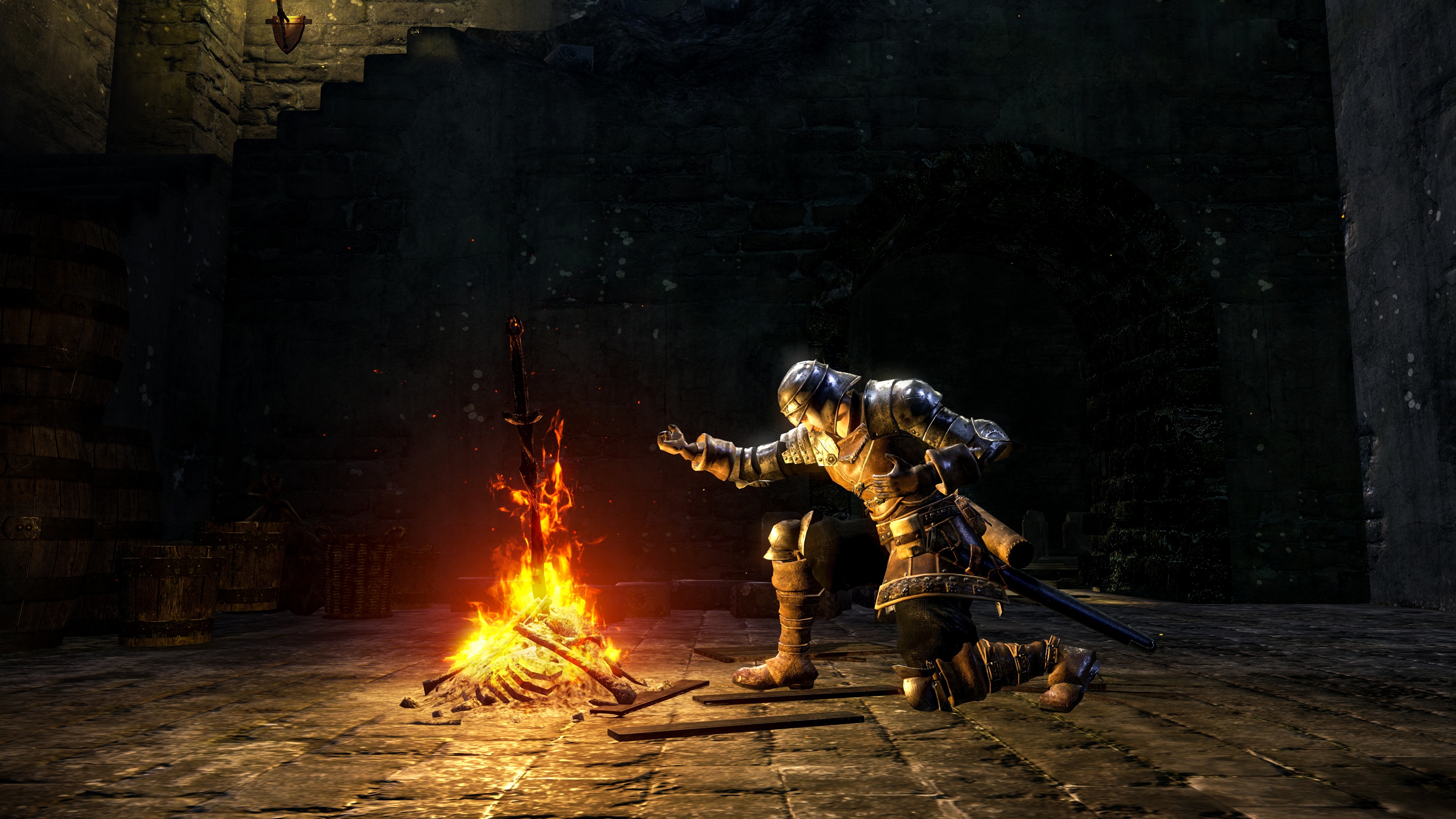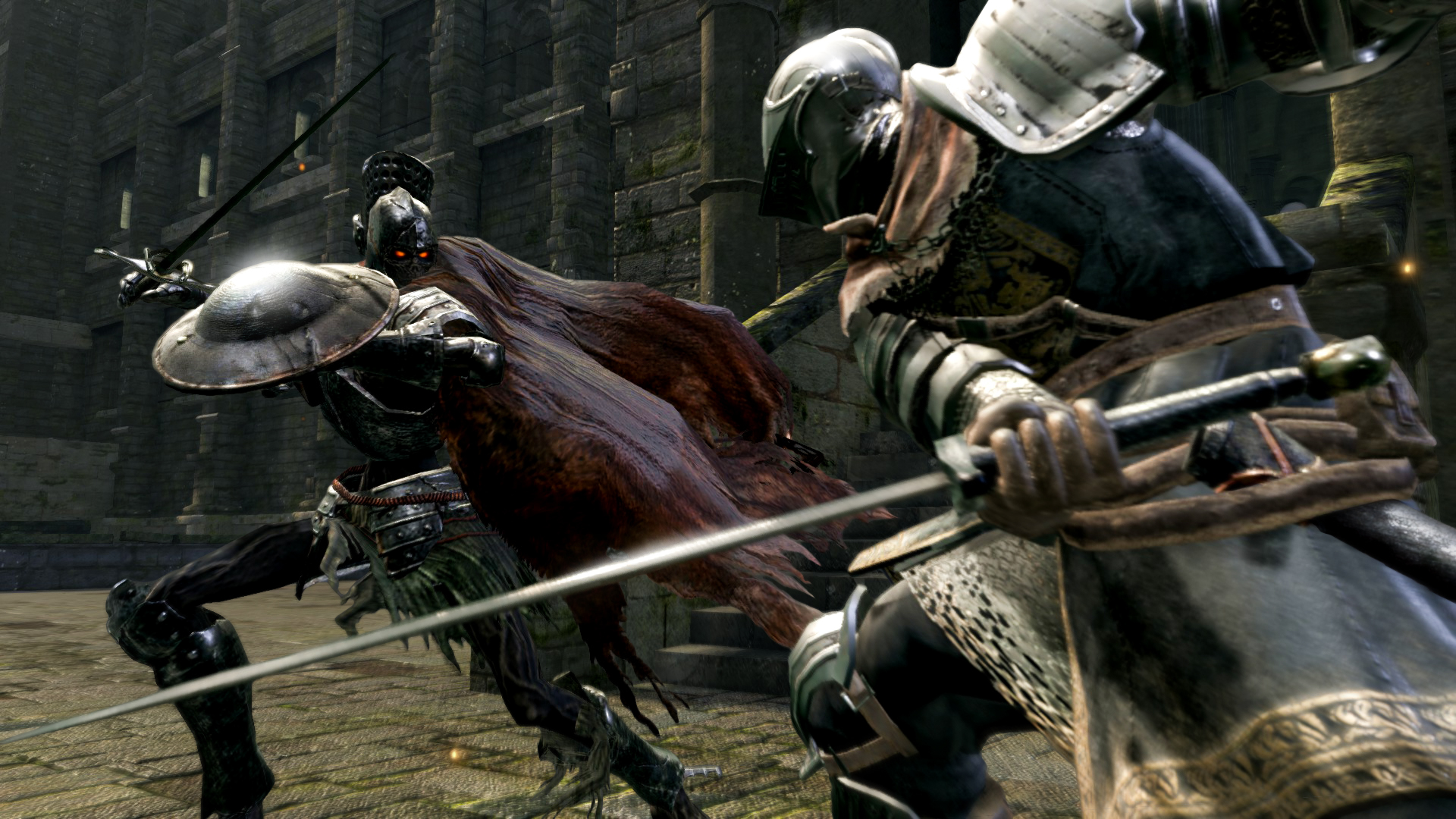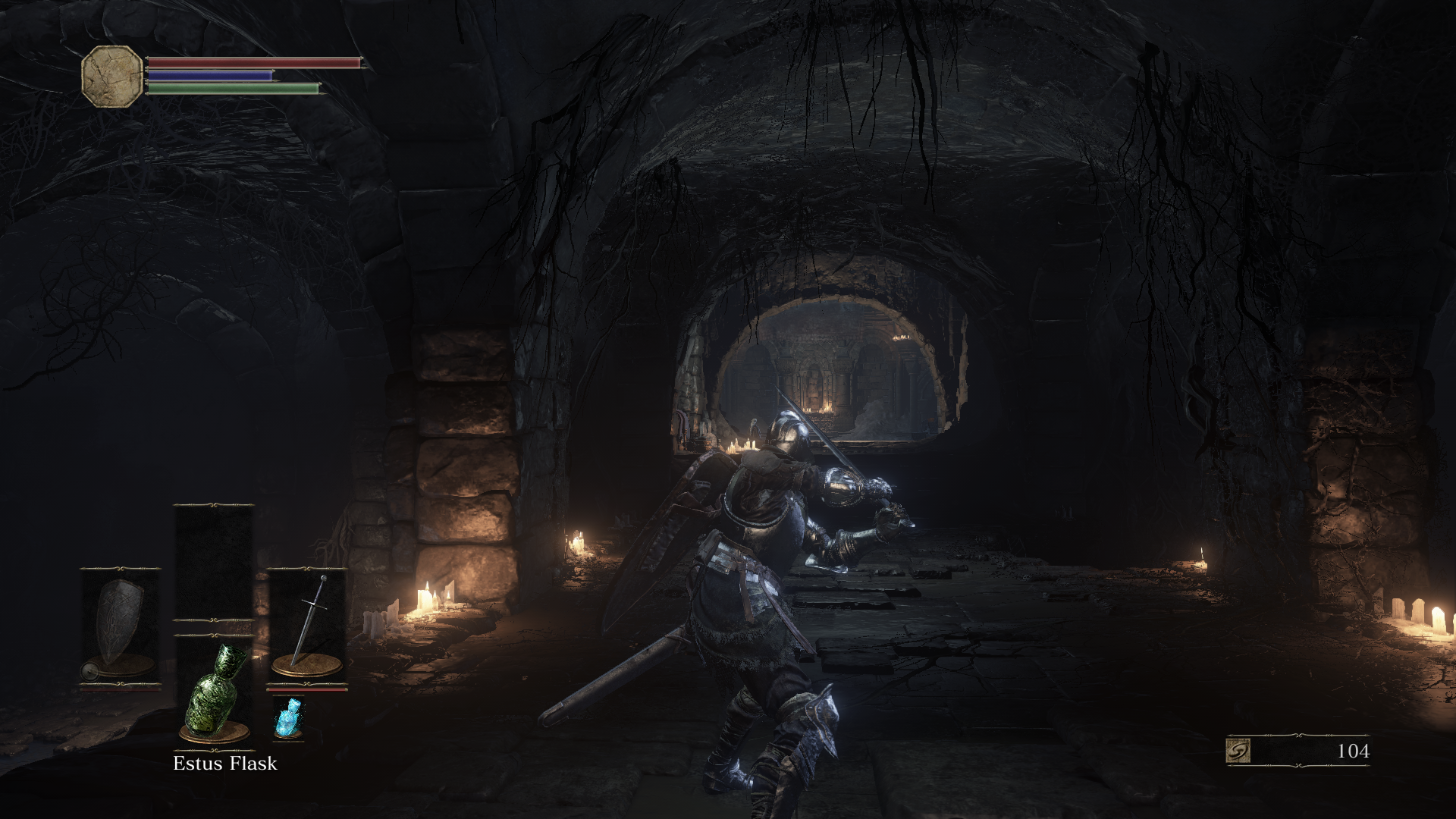THE SOULSBORNE ESSENTIALS
The term “Soulsborne” originated from the existence of Demon’s Souls and Dark Souls. It’s not hard to fathom the mechanics and themes these games directly inspired, and the discourse that came with them.
This article doesn’t aim to counter either, but merely make the games more accessible by deconstructing said mechanics and the mystique revolving around them. So, let’s dive into this.
Dark Souls, especially, is known for popularising most of these mechanics, so it’s only right that emphasis is directed there, before anything else.
BONFIRE

When a player rests by said bonfire, all enemies within the area “de-aggro,” and reset their position. The bonfire is a critical aspect of these games as it helps the player progress the game by reducing runbacks. Some other functionalities include:
- Replenishing consumables in the game, specifically flasks used to refill the player’s HP and FP respectively. You can also ration the charges between the two flasks.
- Allot spells to slots
- Inventory management
- Levelling up
- Warping between bonfires; obtained in the latter half of the game in DS1, but readily available in the other games.
DODGING
I-Frames, also known as “invincibility frames” or “invulnerability frames,” are an intentional property that allow certain frames in an attack animation to ignore all attacks without damage.
This means that a player is completely invulnerable or invincible during the frame of an attack animation, as long as they dodge-roll. I-Frames last about half a second, and occur near the beginning of a roll. If players time their rolls correctly, they can avoid enemy attacks, even if their hitbox “hits” the character.
Because enemies have a limited move set, it is possible for players to eventually get used to attack patterns, and become confident enough to roll through them. One important thing to note is that there are three different types of rolls in these games:
- Fast roll is performed when a player’s equipment weight is generally 30% or less of their maximum equipment load.
- Medium roll is performed when a player’s equipment weight is higher than 30%, and less than 70% of their maximum equipment load. This is the recommended form of rolling because it finds a middle ground between having some armour on, and being nimble enough to dodge through an enemy’s attacks.
- Slow or “fat” rolling is performed when the player’s equipment weight is higher than 70% of their maximum equipment load.

Other ways of confronting enemies exist too. I’m not implying that dodging is the only playstyle one can go for. Using a shield is great way to get up and personal with enemies, while maintaining defensive integrity.
CURRENCY
An irrefutable truth is that levelling up, or purchasing weapons and rings requires money. That is why these games have their own currency that can be used to make said purchases. They all serve the same function, but are named differently depending on the game.
In the Dark Souls series, they are called souls, gained from killing enemies, and collecting “souls” of fallen foes that can be consumed to be readily used. One notable thing in these games is how the player loses all their money when they die, but are granted one more opportunity to “loot” their corpse to retrieve said money.

COMBAT
The combat in these games is more deliberate and intentional than those of its peers. Careful consideration has to be taken when fighting even the most miniscule of enemies. It is always safe to assume that any enemy will take away chunk of your health when they hit you, and this is almost always the case. Fights can be likened to a dance; the player waits for openings and capitalises on them based off of the enemy’s telegraphed attacks. DO NOT SWING RECKLESSLY AS THIS CONSUMES YOUR STAMINA. Larger enemies have poise; they basically do not flinch when hit unless the weapon used is large, or their poise breaks, so be intentional with each swing.
The player has the option to lock-on to enemies, but I have come to realise how erratic the camera is when it is toggled. It is better reserved for one-on-one confrontations i.e., boss fights.
WEAPON UPGRADES
Just like any other RPG, stat-management is an essential part of levelling up your character. DS1 has about 120 weapons which can be categorised differently, and is not exclusive to Greatswords, Spears, Swords, Axes, Greataxes, etc. Because of these different categories, weapons carry different stat requirements, and may be further enhanced by others.
Let’s take a look at the Claymore, a classic. Under the ReqParam, it has a Strength requirement of 16 and a Dexterity requirement of 10. It also scales the more you upgrade your Strength or Dexterity with a ParamBonus of C respectively.

With that in mind, it is always recommended to play around with the different weapons one comes across in the game. There is no distinct playstyle in the context of which is the penultimate weapon.
From co-op and summons, to NPC questlines, to armour sets, talismans/rings, these games are a nosedive into what makes this subgenre one that is heavily opinionated upon, but also a personal favourite of mine.
You are now ready to rise up to the occasion. Dive in headfirst and don’t be afraid to become the new Lord.
Read More Of Our Stuff
A ‘Clair Obscur: Expedition 33’ review
A Clair Obscur: Expedition 33 reviewAs someone who has only ever flirted with the turn-based RPG genre, I am surprised at how much Expedition 33 hooked me in. To set the scene: I am your stereotypical, action-adventure junkie. I am also enthralled by the flashiness of...
Gaslight, Gremlin, Girlboss: The Apothecary Diaries and Hollow Feminism
GASLIGHT, GREMLIN, GIRLBOSS: THE APOTHECARY DIARIES AND HOLLOW FEMINISMThere’s a kind of beauty in restraint, not the kind that hides emotion, but the kind that simmers just beneath the surface, like heat behind a half- glance. Watching The Apothecary Diaries feels...
Bridging Worlds: How Video Game Adaptations Connect Gamers and New Audiences
The world of entertainment is increasingly interconnected, and one of the most prominent trends in recent years has been the adaptation of video games into films, TV shows, and even animated series.










